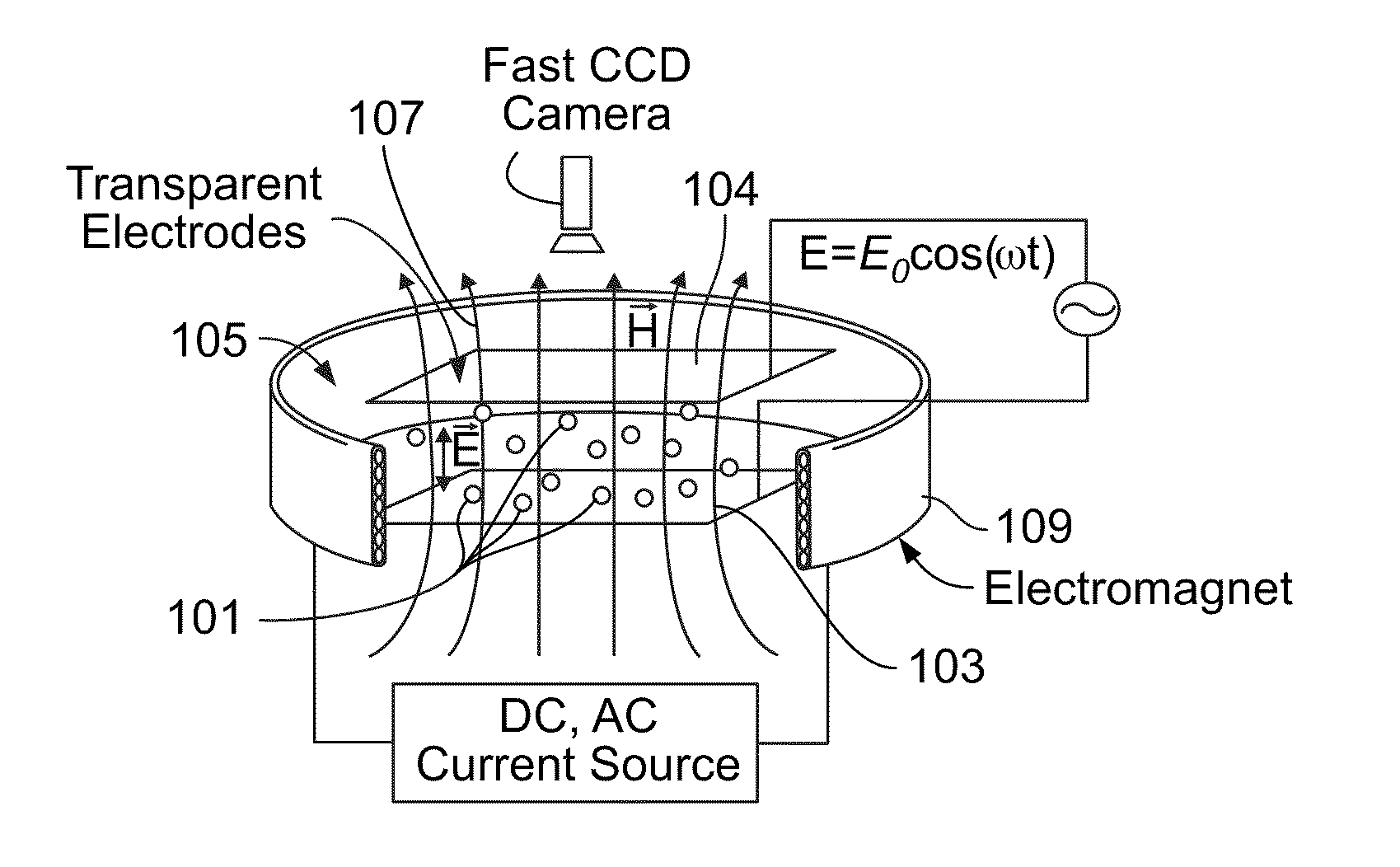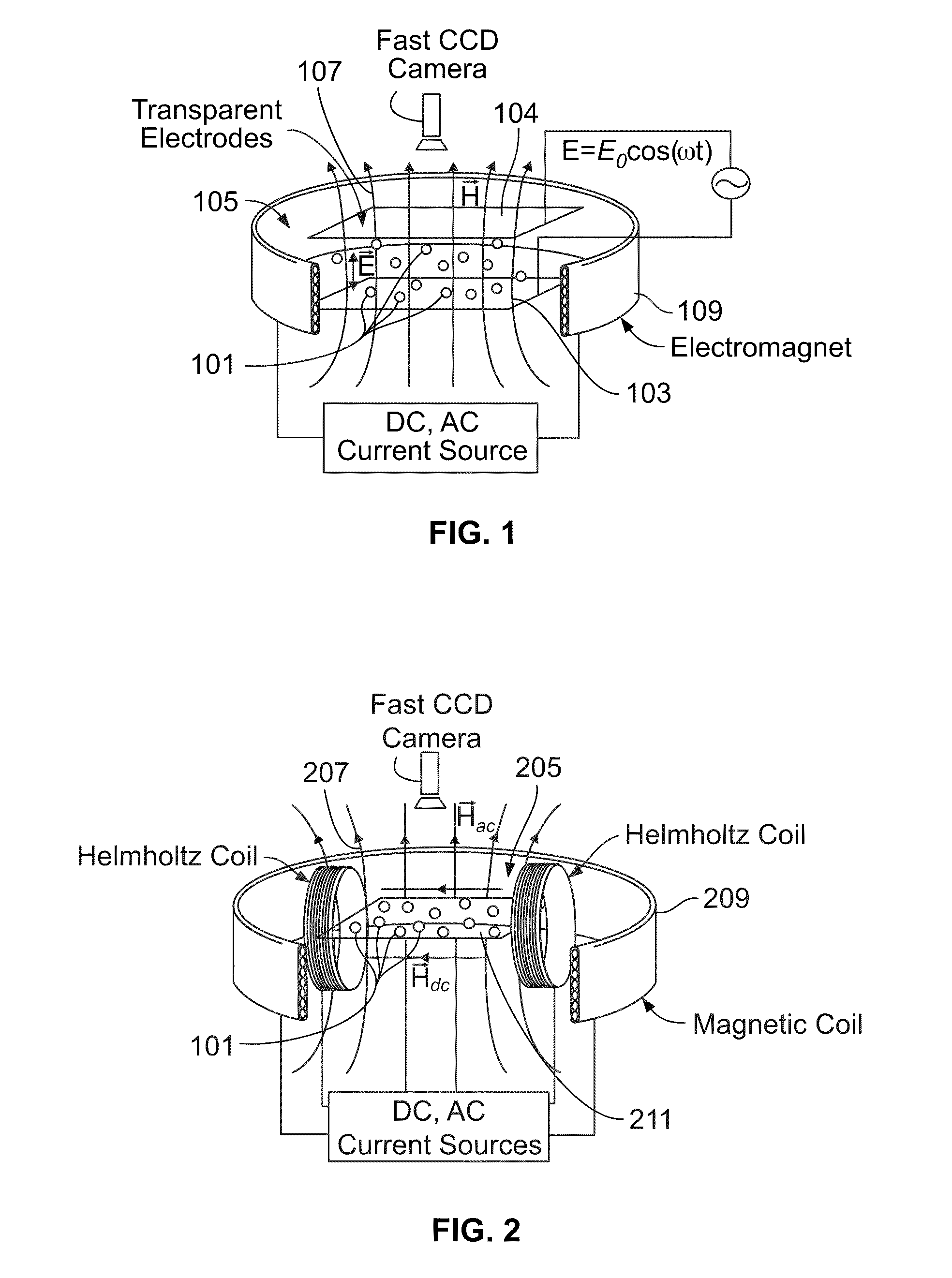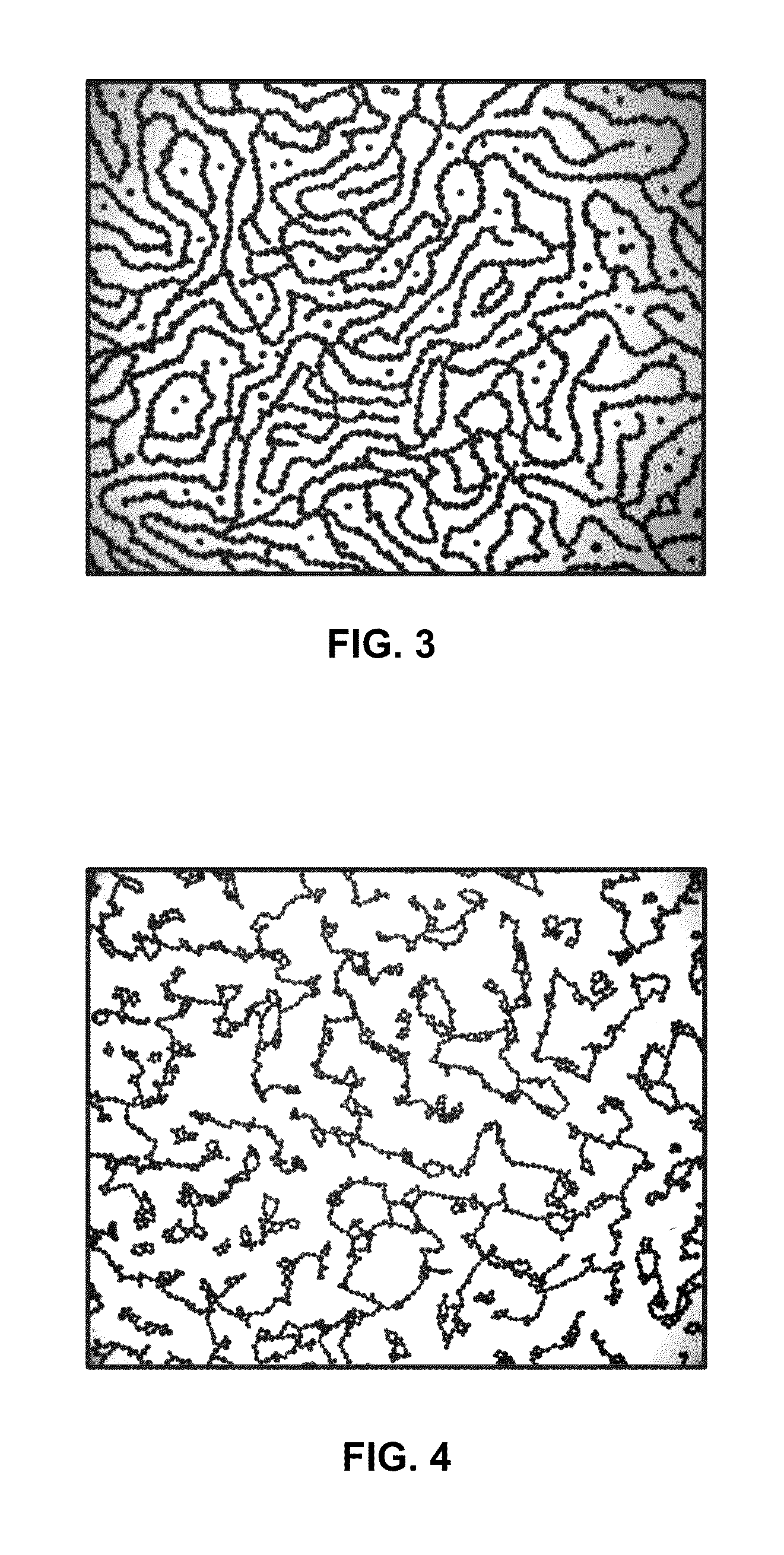Systems and methods for creation of conducting networks of magnetic particles through dynamic self-assembly process
a technology of self-assembly and magnetic particles, applied in the direction of centrifuges, separation processes, filtration separation, etc., can solve the problem that granular particles do not cleanly fit within the definition of solids
- Summary
- Abstract
- Description
- Claims
- Application Information
AI Technical Summary
Benefits of technology
Problems solved by technology
Method used
Image
Examples
Embodiment Construction
[0018]The present invention relates to the dynamic self-assembly of magnetic particles. The self-assembly results in a conducting networks of the magnetic particles. The networks of the present invention can be assembled on either a solid surface or on the surface of a liquid.
[0019]In one embodiment, network generation of the particles through the dynamic self-assembly process of the present invention occurs on a solid surface. In general, the magnetic particles 101 are placed in a cell 105.
[0020]FIG. 1 illustrates one embodiment of a setup in accordance with the principles of the present invention for generating a network on a solid surface. Magnetic particles 101 are placed in a cell 105 for self-assembly. In one embodiment, the cell 105 is located between a lower plate 103 and an upper plate 104. An external magnetic field 107 is provided by a magnet, such as an electromagnet 109, which is placed around the cell 105. In a preferred embodiment, the electromagnet 109 is positioned ...
PUM
| Property | Measurement | Unit |
|---|---|---|
| frequency | aaaaa | aaaaa |
| frequency | aaaaa | aaaaa |
| frequency | aaaaa | aaaaa |
Abstract
Description
Claims
Application Information
 Login to View More
Login to View More - R&D
- Intellectual Property
- Life Sciences
- Materials
- Tech Scout
- Unparalleled Data Quality
- Higher Quality Content
- 60% Fewer Hallucinations
Browse by: Latest US Patents, China's latest patents, Technical Efficacy Thesaurus, Application Domain, Technology Topic, Popular Technical Reports.
© 2025 PatSnap. All rights reserved.Legal|Privacy policy|Modern Slavery Act Transparency Statement|Sitemap|About US| Contact US: help@patsnap.com



